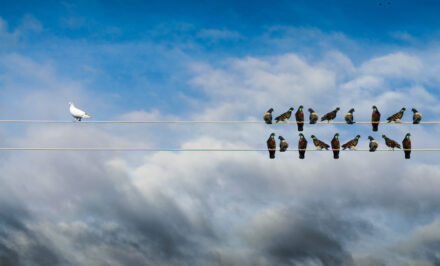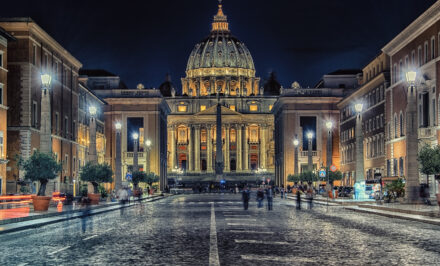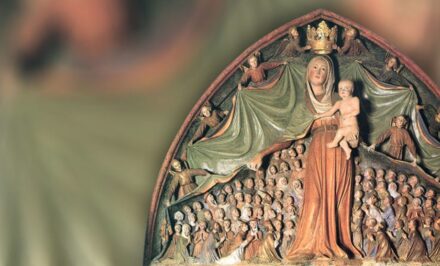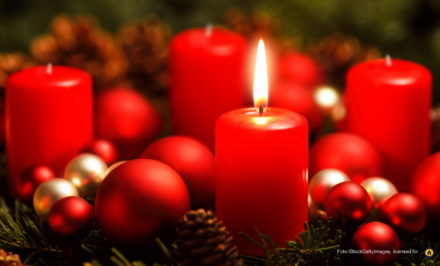 Father Javier Arteaga. Every year we recall that January 20, 1942, when Father Kentenich, who was jailed in Koblenz as a prisoner of the Nazi regimen, decided not to sign a petition for a medical examination, which could have prevented him from being transferred to a concentration camp. In March he was sent to the concentration camp of Dachau, where he remained as a prisoner in inhumane conditions for three and a half years. He offered his “exterior” freedom for the “inner” freedom of his Schoenstatt Family. United to Christ and following his footsteps he accepted pain and a cross so that his children would have “life in abundance”. It was a mortal leap of faith in divine confidence. Father Kentenich’s radical giving of self in the Covenant awakened a great current of solidarity within the Movement, and through this a profound unity among brothers and sisters. In this way, January 20th was constituted the axis of Schoenstatt history.
Father Javier Arteaga. Every year we recall that January 20, 1942, when Father Kentenich, who was jailed in Koblenz as a prisoner of the Nazi regimen, decided not to sign a petition for a medical examination, which could have prevented him from being transferred to a concentration camp. In March he was sent to the concentration camp of Dachau, where he remained as a prisoner in inhumane conditions for three and a half years. He offered his “exterior” freedom for the “inner” freedom of his Schoenstatt Family. United to Christ and following his footsteps he accepted pain and a cross so that his children would have “life in abundance”. It was a mortal leap of faith in divine confidence. Father Kentenich’s radical giving of self in the Covenant awakened a great current of solidarity within the Movement, and through this a profound unity among brothers and sisters. In this way, January 20th was constituted the axis of Schoenstatt history.
This January 20, 2012, has a very special characteristic: we celebrate the 60th Anniversary of the Shrine of our Mother Thrice Admirable, Queen and Victress of Schoenstatt in Florencio Varela.
God’s paternal love
 Sixty years ago God intervened in our history again, and he brought about a new source of grace, a Shrine of Mary for the blessing of all his pilgrim children. Here we have experienced Her: as Mother, who loves and shelters, as Educator, who forms us as new men in Christ, and the Queen, who sends us forth as disciples – missionaries of Christ to renew our society. But in this Shrine, Mary allows us especially to experience what Father Kentenich expressed saying, “The more we were led to the Most Holy Virgin, the more strongly She led us to Christ, and in Christ to the Father” (3-19-1952). Yes, here, we strongly experience God’s paternal love.
Sixty years ago God intervened in our history again, and he brought about a new source of grace, a Shrine of Mary for the blessing of all his pilgrim children. Here we have experienced Her: as Mother, who loves and shelters, as Educator, who forms us as new men in Christ, and the Queen, who sends us forth as disciples – missionaries of Christ to renew our society. But in this Shrine, Mary allows us especially to experience what Father Kentenich expressed saying, “The more we were led to the Most Holy Virgin, the more strongly She led us to Christ, and in Christ to the Father” (3-19-1952). Yes, here, we strongly experience God’s paternal love.
The Shrine – a sign
On August 15, 1951, the cornerstone of the Shrine was laid containing the following words: “This Shrine will be the guarantee and pledge for all times so that the spirit of January 20, 1942, will not die in the Family, that the paternal principle will be recognized in the Church and that the Kingdom of the Father will be extended in triumph. At the same time, it will be a symbol of paternal love and childlike loyalty.” On January 17, 1952, Father Kentenich arrived in Argentina on the way to exile in the United States. He had promised that he would come to bless this Shrine from wherever he was, and he fulfilled his promise. There was a mixture of joy because of the Founder and Father’s presence and of great sorrow; the Sisters could not communicate with him since Rome had prohibited it. On January 20, 1952, a day that he had especially awaited, he blessed the Shrine of New Schoenstatt and he defined it as “a sign of faith, unity, struggle and victory.”
-
Sign of faith: “In the first place, the Shrine is a fruit of faith, but it will also be a source where an immense faith will emerge…If faith the size of the mustard seed ‘can move a mountain from here to there’ (Matthew 17:20), if it is the size of a pumpkin seed, what miracles will it work? With this “faith of a pumpkin seed,” the Family struggled more strongly at the time that it was overcome from one side to another by the force of the waves.” (Father Kentenich 1-20-1952)
-
Sign of unity: Sign of unity: “Mutual unity develops in this Shrine…but at the same time, the walls of this Shrine should be a source of common aspiration…We know that the Most Holy Virgin has showered Her grace on us today so that we may be one soul and heart.” (Father Kentenich 1-20-1952)
-
Sign of struggle: “How many economic and spiritual sacrifices you have made! But not only the Sisters of Mary, rather all of us, without exception, have offered them in our own way (for the construction of the Shrine)…For this reason we say that the Shrines are not only gifts from “above”, but rather by vigorous offerings from “below”…January 20, 1942 and January 20, 1952, to what heights the courage for the struggle has grown through the years!” (Father Kentenich 1-20-1952)
-
Sign if victory: “Those who know the history of the Family know that the Most Holy Virgin placed as a condition that the Family act victoriously…It is the same one that she placed before the entire Family in 1914: the total giving of self of the Family of each member especially as an instrument in her hand…With this sign you will conquer!” …When this Shrine is a sign of faith, a sign of struggle, a sign of unity and a sign of victory.” (Father Kentenich 1-20-1952)
Father Current
 On March 19, 1952, the Feast of Saint Joseph, the Founder and Father placed the Symbol of God the Father in the Shrine: “As of today, we know that the Father Symbol indicates: March 19, 1952, Saint Joseph’s feast day, the Father and Founder placed: Ad Patrem. Do you know what this means? What comes from the Father should return to the Father…The Most Holy Virgin is not only a whirlpool that takes us to Christ, but rather, also toward God the Father.” But Father Kentenich also stressed that in order for modern man to know and believe in the paternal love of God, they should be credible, transparent men and women of this love, that they love unconditionally as parents:
On March 19, 1952, the Feast of Saint Joseph, the Founder and Father placed the Symbol of God the Father in the Shrine: “As of today, we know that the Father Symbol indicates: March 19, 1952, Saint Joseph’s feast day, the Father and Founder placed: Ad Patrem. Do you know what this means? What comes from the Father should return to the Father…The Most Holy Virgin is not only a whirlpool that takes us to Christ, but rather, also toward God the Father.” But Father Kentenich also stressed that in order for modern man to know and believe in the paternal love of God, they should be credible, transparent men and women of this love, that they love unconditionally as parents:
“If the Most Holy Virgin wants to create a profound worldwide renewal from Her Shrines, then She has to also take care that the transparency of God the Father, the human father, as a reflection of the eternal Father, once again be the point of repose here on earth. The Father Current and the Current of Childlikeness!” (3-19-1952) This is the Shrine of the Father through the current of life that emerged here. This is the Shrine of the Father because here Mary allows us to experience Christ, who manifests the great love of God the Father. It is the Shrine of the Father because this Shrine is the fruit of Father Kentenich’s faith, desire, and giving of self.
Dear Schoenstatt Family, it is a sign of Divine Providence that the Argentinean Family celebrated the 60th Anniversary of the Shrine of the Father during the Year of the Shrine Current on the way to Schoenstatt’s centenary accompanied by the Father Symbol – a gift of the Founder and Father for the Original Shrine – that is on its pilgrimage through the world toward 2014. This Shrine is a gift: in a time of great up-rootedness and insecurity, we take the opportunity to grow in childlikeness and paternity. But, this Shrine is also a challenge for us: We, as children, brothers, sisters, and parents in Covenant with Mary, are called to live and to develop a society with a soul and family attachments. The prophetic words of the Founder and Father remain in force, and it illuminates this mission:
This Shrine is a sign of faith, of unity, of struggle, and of victory.
Celina M. Garza: Spanish/English translation – Melissa Peña-Janknegt: English edit













